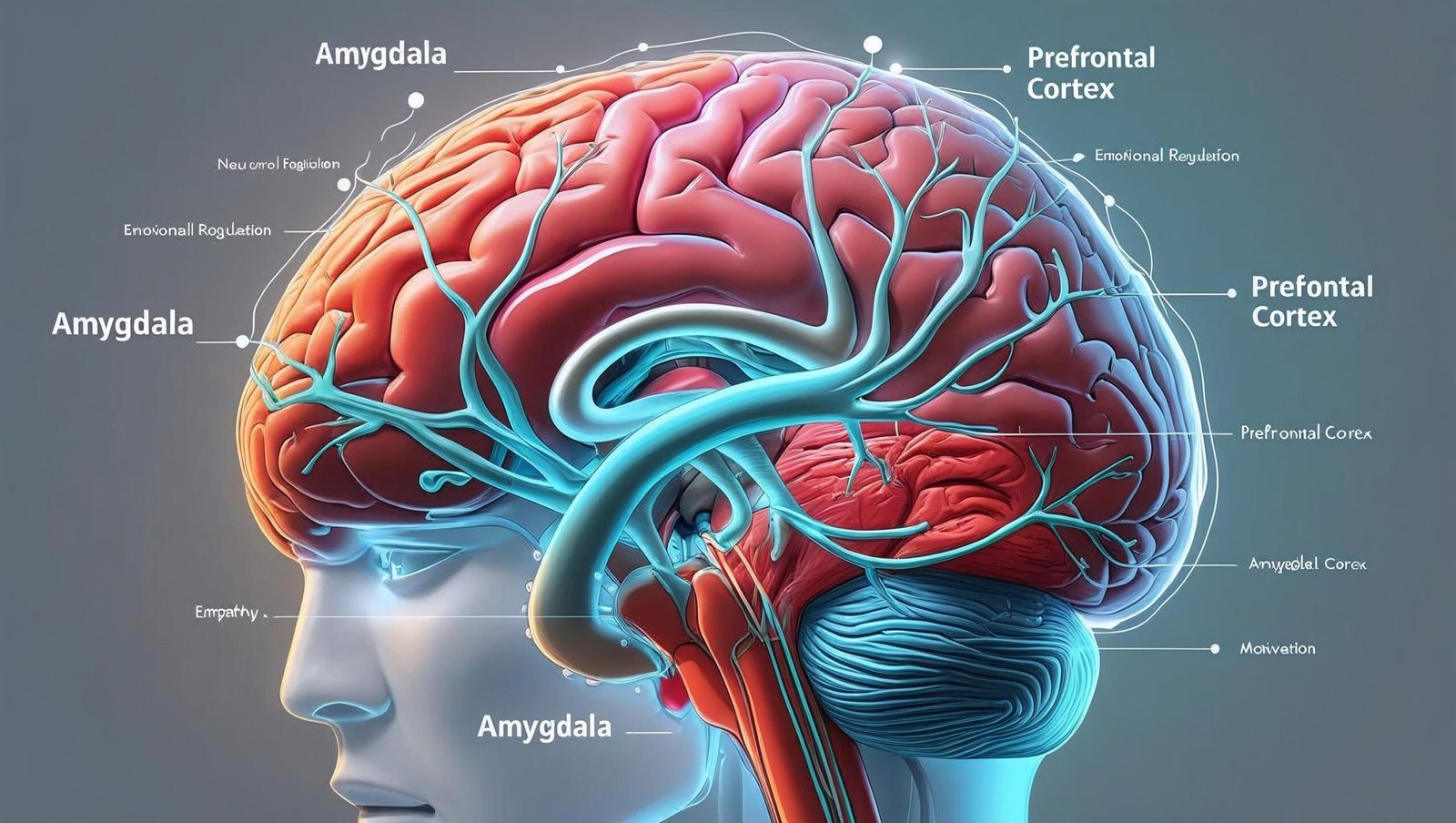Introduction: The Hidden Power of Emotional Intelligence by Daniel Goleman
Emotional Intelligence by Daniel Goleman is not just a psychology book; it is a transformational tool that reshapes how we perceive success, decision-making, and relationships. Published in 1995, this groundbreaking work challenged the long-held supremacy of IQ as the primary indicator of intelligence. Goleman introduces an emotionally charged perspective—one that emphasizes self-awareness, empathy, motivation, self-regulation, and social skills as essential components of intelligence.
Over the course of this in-depth review, we will explore the five most shocking truths presented in Emotional Intelligence by Daniel Goleman, assess the core arguments, evaluate the research backing them, and understand how they apply to modern personal and professional life.

1. IQ Is Not the Only Predictor of Success
The first provocative argument in Emotional Intelligence by Daniel Goleman is the assertion that IQ contributes only 20% to one’s success in life. The remaining 80% is determined by emotional intelligence (EQ) and other social factors. This flies in the face of centuries of academic dogma and forces educators, parents, and leaders to reconsider how we evaluate talent and potential.
Goleman asserts that while academic brilliance can open doors, it is EQ that sustains progress, builds meaningful relationships, and nurtures leadership. In essence, people with higher EQ often outperform those with higher IQ in real-life contexts such as conflict resolution, team collaboration, and leadership under pressure.
2. Emotional Intelligence Begins in Childhood
A key insight from Emotional Intelligence by Daniel Goleman is the pivotal role of early childhood development in shaping emotional competencies. According to Goleman, children’s ability to handle frustration, control impulses, and empathize with others is largely formed in the first few years of life. This makes parental involvement and social environment critical in shaping emotionally intelligent adults.
Goleman builds upon neuroscientific findings to explain how the amygdala and prefrontal cortex interact during emotional responses. He calls this the “amygdala hijack,” where the emotional brain overrides the rational brain, leading to impulsive reactions. By training children early in emotional regulation, we can equip them with lifelong skills that prevent such hijacks.
3. Emotional Intelligence Is Trainable—At Any Age
One of the most uplifting ideas in Emotional Intelligence by Daniel Goleman is that EQ is not fixed. It can be cultivated through conscious practice, mindfulness, and feedback. Unlike IQ, which is relatively stable, emotional intelligence is plastic and responsive to life experience and self-awareness exercises.
Goleman outlines clear frameworks for improving each domain of EQ:
-
Self-awareness: Journaling, meditation, and feedback
-
Self-regulation: Stress management, delayed gratification
-
Empathy: Active listening, perspective-taking
-
Motivation: Goal-setting, intrinsic rewards
-
Social skills: Conflict resolution, assertive communication
This empowering message from Emotional Intelligence by Daniel Goleman gives hope to those who struggle with emotional reactivity or poor interpersonal relationships—it’s never too late to change.
4. Workplaces Succeed or Fail Based on Emotional Intelligence
Corporate leaders and human resource professionals will find compelling evidence in Emotional Intelligence by Daniel Goleman about how crucial EQ is to workplace success. Goleman shows that emotionally intelligent leaders inspire trust, resolve conflicts, and cultivate cohesive teams.
He details how low EQ in managers leads to toxic cultures, burnout, and disengagement. Conversely, high-EQ workplaces promote innovation, resilience, and employee well-being. Goleman’s later research even links emotional intelligence to organizational profitability.
Perhaps the most striking application is in leadership. Goleman proposes that effective leaders are distinguished not by technical knowledge, but by how well they manage emotions—their own and others’.
5. Emotional Illiteracy Is a Societal Crisis
The most sobering section of Emotional Intelligence by Daniel Goleman discusses the consequences of emotional illiteracy in modern society. Rising rates of domestic violence, school shootings, depression, and substance abuse are, Goleman argues, partly rooted in a lack of emotional skills.
He calls for systemic change—embedding emotional education in schools, counseling in communities, and emotional competence training in workplaces. Goleman suggests that when we ignore emotions, we amplify social dysfunction. His conclusion: societies that value emotional intelligence thrive; those that don’t stagnate or collapse under the weight of unresolved emotional conflict.

Chapter-Wise Glimpse of Emotional Intelligence by Daniel Goleman
Let us delve deeper into the core chapters and how Emotional Intelligence by Daniel Goleman unpacks its thesis:
-
Chapter 1–3: The Emotional Brain – Discusses how the limbic system and rational brain interact, including the biology of the amygdala hijack.
-
Chapter 4–7: Managing Emotions – Covers how awareness and control can be learned, even in adulthood.
-
Chapter 8–12: The Role of EQ in Daily Life – Real-world stories of emotional mastery vs emotional failure.
-
Chapter 13–15: Emotional Literacy in Children – Highlights the need for early education and parenting strategies.
-
Chapter 16–19: EQ in the Workplace – A blueprint for HR departments and leaders.
-
Chapter 20–22: Societal Ramifications – The connection between EQ and societal wellness.
Every chapter in Emotional Intelligence by Daniel Goleman reinforces the notion that the emotional mind must be integrated with the rational mind to produce balanced, capable individuals.
Critical Appraisal of Emotional Intelligence by Daniel Goleman
While the ideas presented in Emotional Intelligence by Daniel Goleman are revolutionary, they are not without critique. Some psychologists argue that EQ is too broad and hard to measure. Others point out that the scientific studies cited in the book—though compelling—are often correlational, not causal.
Yet, despite these criticisms, Goleman’s work remains a watershed moment in psychological literature. It bridges the gap between science and self-help, offering both rigorous theory and practical tools.
Personal Transformation Through Emotional Intelligence
Reading Emotional Intelligence by Daniel Goleman is not a passive experience. It forces introspection. It encourages readers to evaluate how well they respond under pressure, how empathetically they listen, and how resiliently they bounce back from setbacks.
For me personally, the book was a mirror. It revealed blind spots in my behavior and offered constructive pathways to improvement. Whether you’re a student, a parent, a leader, or someone seeking self-mastery, this book will resonate deeply.
The Neuroscience Behind Emotional Intelligence
One of the most fascinating layers explored in Emotional Intelligence by Daniel Goleman is the neuroscience behind emotional responses. Goleman takes readers on a compelling journey through the architecture of the brain—especially the interplay between the amygdala and the neocortex.
The amygdala, often dubbed the emotional sentinel, plays a central role in processing emotions, particularly fear and aggression. Goleman explains how the amygdala can bypass rational thought, resulting in impulsive reactions—a phenomenon he famously describes as the “amygdala hijack.” This is when our emotional brain overrides our thinking brain, pushing us to act before we process.
In Emotional Intelligence by Daniel Goleman, it is emphasized that the prefrontal cortex is crucial for emotional regulation. This area enables humans to reason, reflect, and reframe situations. When the prefrontal cortex is well-developed and trained, individuals exhibit stronger self-control, more thoughtful decision-making, and healthier interpersonal relationships.
EQ vs IQ: A Modern-Day Reassessment
For decades, Intelligence Quotient (IQ) was considered the gold standard of assessing an individual’s potential. Academic institutions, hiring systems, and even parenting strategies focused heavily on cognitive ability. But Emotional Intelligence by Daniel Goleman fundamentally disrupts this narrative.
Goleman argues that IQ may open the door, but EQ keeps you in the room. That is, your academic brilliance might land you a job, but your emotional skills determine how well you collaborate, influence, and lead. Even in highly technical roles, emotional intelligence becomes a decisive factor in leadership, conflict management, and motivation.
A compelling argument in Emotional Intelligence by Daniel Goleman is that IQ is largely inherited and stable, while EQ is malleable and influenced by experiences, environment, and self-awareness. This perspective has redefined leadership training, recruitment practices, and even school curricula across the globe.

Real-Life Applications: Stories That Stick
To reinforce his thesis, Goleman includes numerous real-life case studies in Emotional Intelligence by Daniel Goleman. These stories serve as emotional proof points that breathe life into scientific data.
One powerful anecdote is about a surgeon with an exceptional IQ who failed to maintain rapport with his patients. Despite being a technical genius, his cold demeanor, lack of empathy, and short temper led to a decline in patient satisfaction and even increased malpractice risks.
Contrast this with a nurse practitioner who, although not as academically accomplished, consistently received outstanding reviews. Her compassion, communication skills, and emotional awareness made patients feel safe, understood, and cared for.
Emotional Intelligence by Daniel Goleman uses such stories to illustrate that emotional competencies are not soft skills—they are survival skills in a world driven by human interaction.
Parenting and Education: Building Emotional Literacy
If there is one domain where Goleman believes change must begin, it is education. According to Emotional Intelligence by Daniel Goleman, emotional literacy should be taught as early as reading or math.
Goleman advocates for school programs that teach children how to identify feelings, empathize with others, resolve conflicts peacefully, and bounce back from failure. These are not merely feel-good strategies—they are scientifically validated methods for improving behavior, reducing dropout rates, and increasing academic performance.
Emotional intelligence education fosters environments where students feel heard, supported, and emotionally safe. This lays the foundation for long-term mental health, resilience, and meaningful contribution to society.
Parents, too, play a vital role. In Emotional Intelligence by Daniel Goleman, the importance of parental modeling is emphasized. Children often absorb their emotional style from observing how adults react to stress, disappointment, and conflict. By becoming more emotionally intelligent themselves, parents naturally teach these skills to their children.
The Role of EQ in Crisis Management
In today’s volatile world, emotional intelligence is not just an asset—it’s a necessity. From navigating a global pandemic to coping with financial uncertainty or managing team burnout, leaders and individuals are tested in ways unprecedented in modern history.
Emotional Intelligence by Daniel Goleman provides a roadmap for emotional agility in crisis. Emotional awareness allows individuals to recognize their own stress levels and adjust responses proactively. Empathy ensures that we do not become numb to the collective suffering of others. Motivation keeps us moving forward with purpose, even amid adversity.
One of the most inspiring case studies in the book involves a hospital administrator during a healthcare crisis. Instead of reacting with panic or bureaucracy, he leaned into transparent communication, emotional support for staff, and adaptability. As a result, the hospital emerged stronger—both in terms of morale and service delivery.
Spiritual and Philosophical Underpinnings of EQ
Beyond the practical, Emotional Intelligence by Daniel Goleman also touches on the philosophical and spiritual dimensions of emotional life. Drawing connections to mindfulness, Buddhism, and even classical Stoicism, Goleman hints at a broader truth: mastering emotion is also mastering the self.
In fact, Goleman’s later works build upon these foundations, exploring how spiritual practices like meditation and compassion training enhance emotional intelligence. This alignment of inner balance and outer awareness offers a holistic framework for well-being.
This perspective elevates emotional intelligence from a workplace tool or educational strategy to a personal philosophy—a way of living more consciously, more kindly, and more wisely.

EQ and Digital Life: A New Challenge
In an era of hyperconnectivity, emotional intelligence faces new challenges and opportunities. Social media, remote work, digital learning, and virtual communication have changed how emotions are expressed, misinterpreted, or even manipulated.
Goleman’s insights in Emotional Intelligence by Daniel Goleman are more relevant than ever. Tone, empathy, and self-regulation must now transcend the screen. Cyberbullying, online rage, and algorithm-driven echo chambers are symptoms of emotional illiteracy in the digital world.
To counteract this, Goleman urges the development of digital EQ—a new skill set that combines emotional literacy with media literacy. For example, pausing before reacting to a triggering tweet, showing empathy during a Zoom meeting, or consciously curating content that uplifts rather than divides.
The emotional intelligence of tomorrow is not just about boardrooms or classrooms—it’s about timelines, comment threads, and every click of the thumb.
A Personal Call to Action
Reading Emotional Intelligence by Daniel Goleman is more than intellectual engagement—it’s a moral invitation. It challenges us to become more attuned to ourselves and more compassionate toward others.
Whether you’re a leader seeking to build a better team, a parent raising a mindful child, a teacher shaping future citizens, or simply a seeker of personal growth, this book is a powerful ally. It demands honesty, courage, and daily practice—but the rewards are immeasurable.
The world needs more kindness, more patience, and more understanding. In a time of global noise, Emotional Intelligence by Daniel Goleman offers a way to listen—to yourself, to others, and to what really matters.
Embracing Emotional Growth in Everyday Life
Developing deeper self-awareness and compassion is not an overnight process, but a journey worth embarking upon. Small, consistent changes in how we respond, listen, and reflect can lead to remarkable personal evolution. In a world that often prioritizes speed over substance, emotional depth remains a timeless and invaluable strength.
The Quiet Strength of Emotional Maturity
Modern society often undervalues emotional maturity, favoring rapid results and superficial interactions. Yet, true connection stems from patience, vulnerability, and active listening. The ability to pause before reacting, to acknowledge another’s experience without judgment, is a hallmark of true wisdom. In personal relationships, it builds trust; in leadership, it inspires loyalty. Developing such qualities requires intention, not instinct. It calls for a daily practice of reflection and presence. As digital distractions multiply and external pressures mount, anchoring oneself in emotional clarity becomes not just beneficial, but essential for maintaining inner balance and nurturing authentic human connection.

FAQs on Emotional Intelligence by Daniel Goleman
Q1. What is the main thesis of Emotional Intelligence by Daniel Goleman?
A1. The central argument is that emotional intelligence, not IQ, is the key determinant of success in life, work, and relationships.
Q2. Is emotional intelligence scientifically proven?
A2. Yes, numerous studies in neuroscience and psychology support the components of EQ, though exact measurement tools are still debated.
Q3. Can emotional intelligence be learned?
A3. Absolutely. Emotional Intelligence by Daniel Goleman emphasizes that EQ is malleable and can be developed at any age.
Q4. What are the five components of emotional intelligence?
A4. Self-awareness, self-regulation, motivation, empathy, and social skills.
Q5. Is the book relevant today?
A5. More than ever. In an age of digital distraction, remote work, and global stress, emotional intelligence is vital for personal and professional resilience.
Conclusion: Why Emotional Intelligence by Daniel Goleman Is a Must-Read
Emotional Intelligence by Daniel Goleman is not a fleeting trend or a pop psychology pamphlet—it’s a life manual. It redefines what it means to be smart in the 21st century. As our world grows more interconnected, the ability to navigate complex emotional landscapes becomes paramount.
With clear examples, robust science, and deep wisdom, Goleman shows us that success is not about being the smartest person in the room—but the most emotionally attuned.
Whether you’re looking to improve your leadership, your relationships, or your own emotional well-being, Emotional Intelligence by Daniel Goleman offers timeless guidance.
Visit shubhanshuinsights.com for more life-changing book reviews and insights.
Share your thoughts:
What’s one moment in your life where emotional intelligence saved the day? Comment below—I’d love to hear your experience.